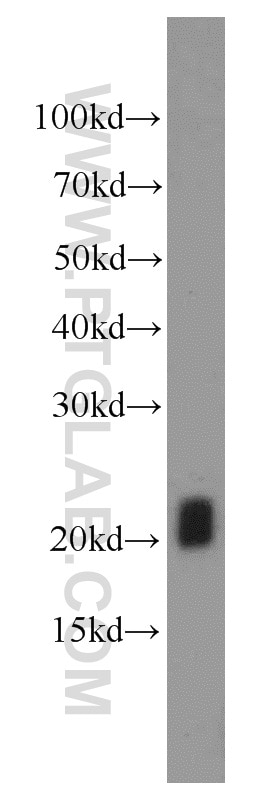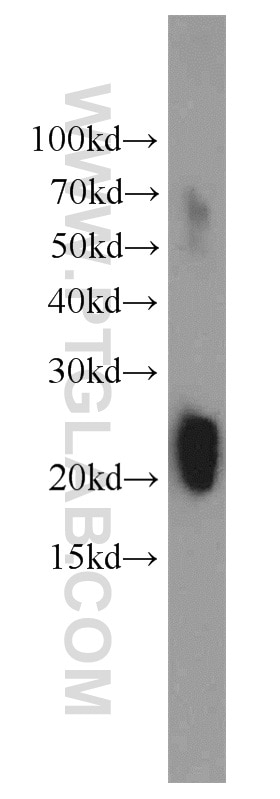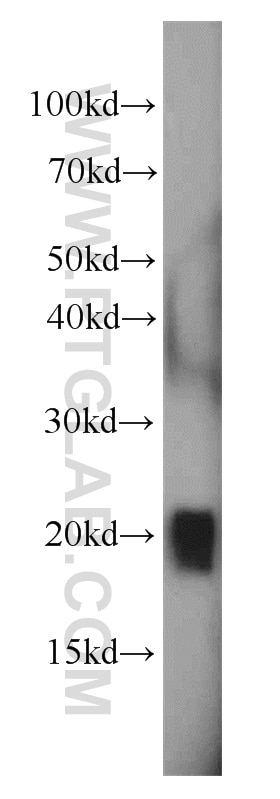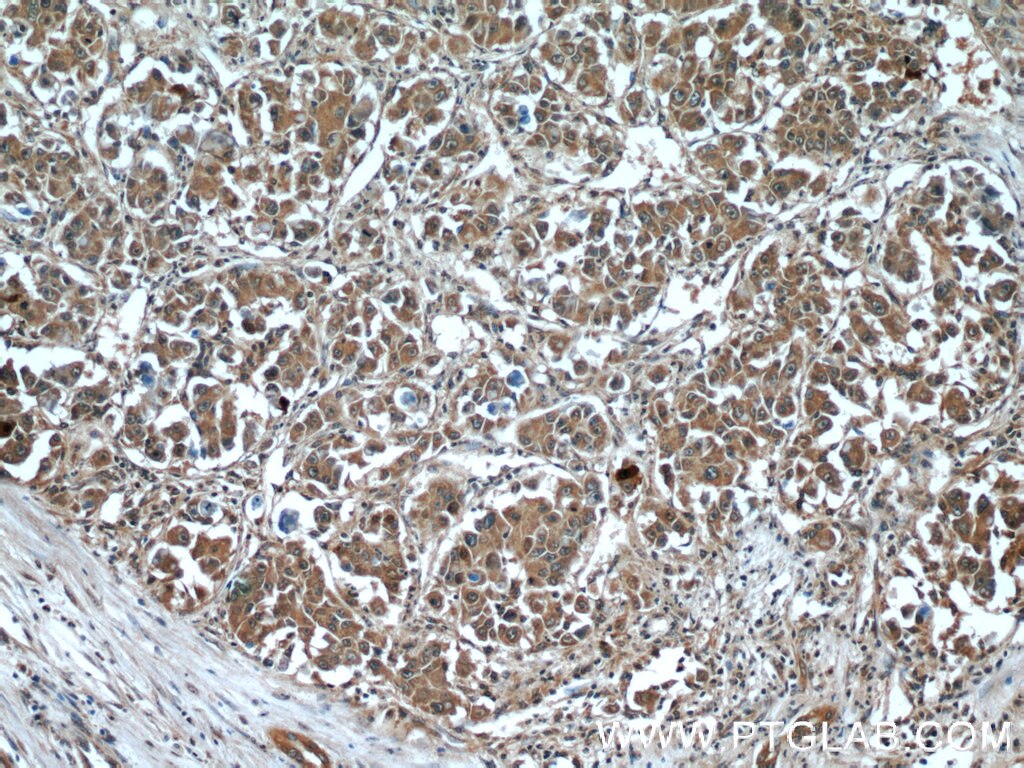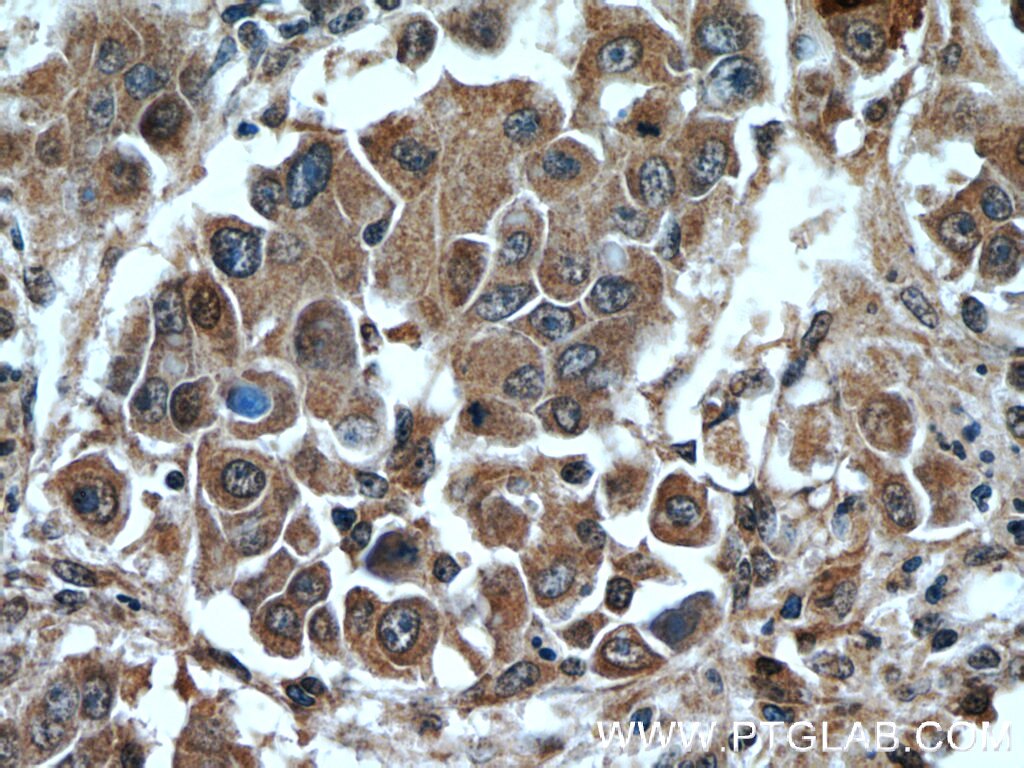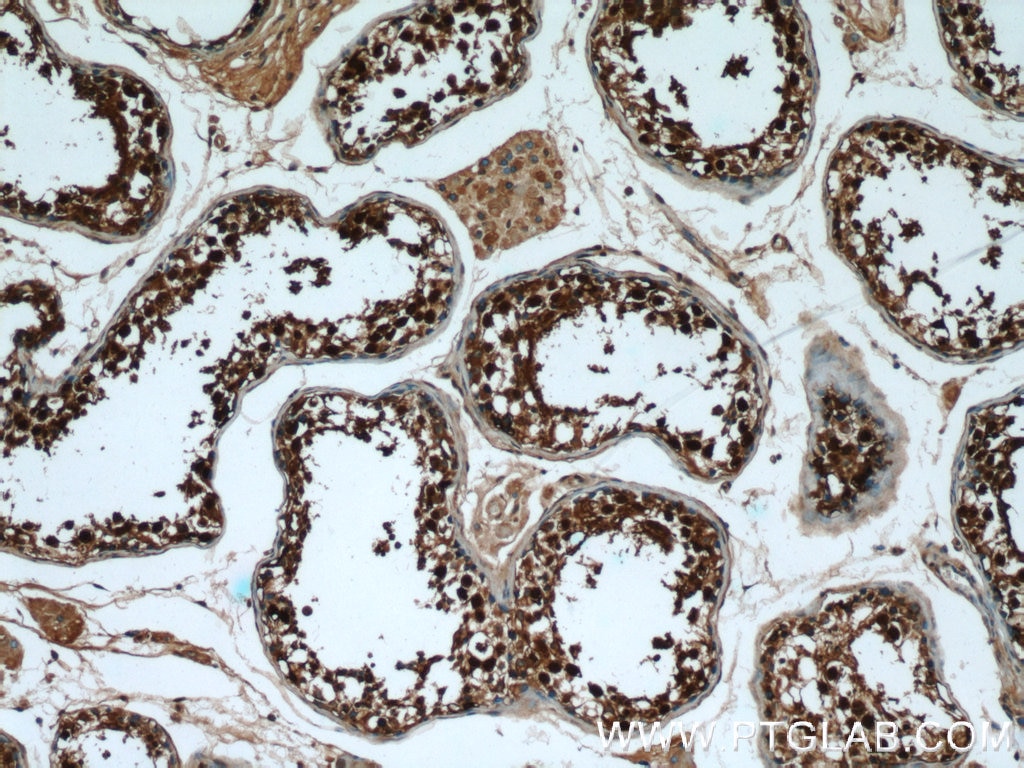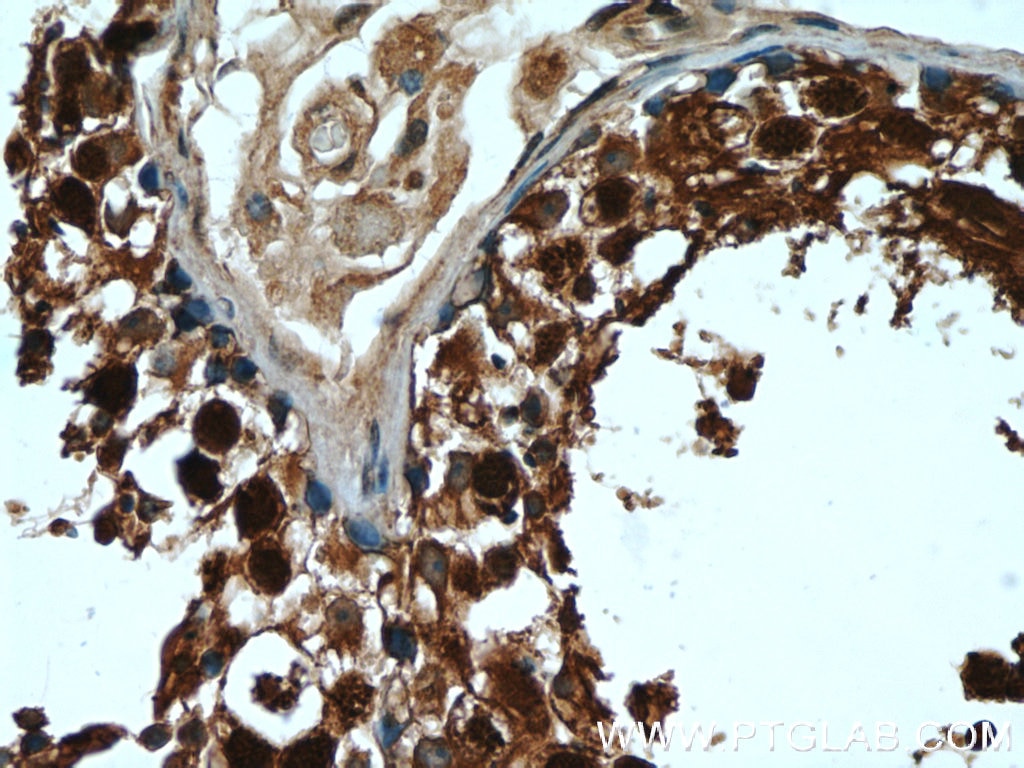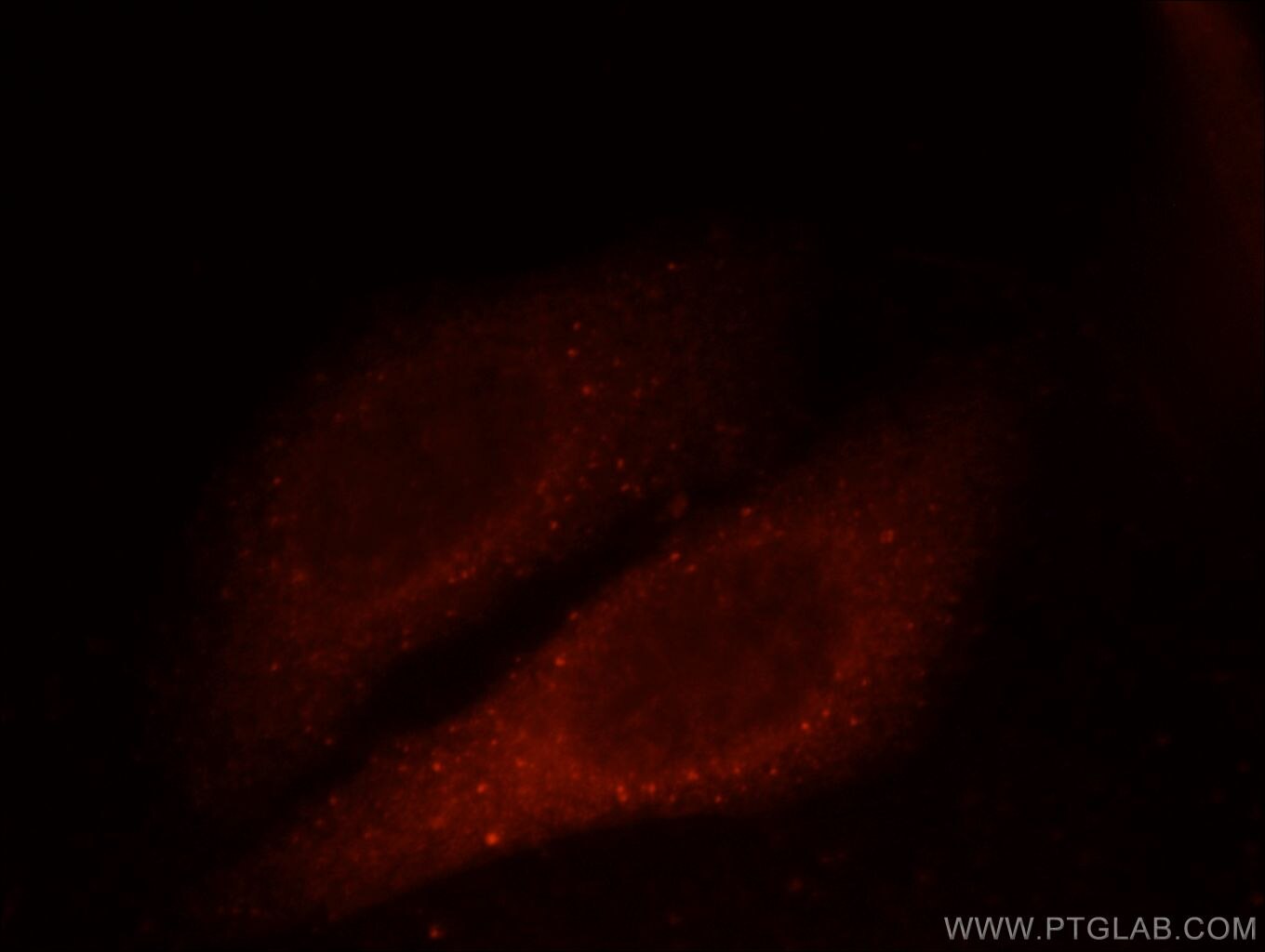GAGE2D Polyclonal antibody
GAGE2D Polyclonal Antibody for WB, IF, IHC, ELISA
Host / Isotype
Rabbit / IgG
Reactivity
human
Applications
WB, IF, IHC, ELISA
Conjugate
Unconjugated
Cat no : 12532-1-AP
Synonyms
Validation Data Gallery
Tested Applications
| Positive WB detected in | K-562 cells, HeLa cells, human testis tissue |
| Positive IHC detected in | human liver cancer tissue, human testis tissue Note: suggested antigen retrieval with TE buffer pH 9.0; (*) Alternatively, antigen retrieval may be performed with citrate buffer pH 6.0 |
| Positive IF detected in | HepG2 cells |
Recommended dilution
| Application | Dilution |
|---|---|
| Western Blot (WB) | WB : 1:500-1:2000 |
| Immunohistochemistry (IHC) | IHC : 1:20-1:200 |
| Immunofluorescence (IF) | IF : 1:10-1:100 |
| It is recommended that this reagent should be titrated in each testing system to obtain optimal results. | |
| Sample-dependent, Check data in validation data gallery. | |
Product Information
12532-1-AP targets GAGE2D in WB, IF, IHC, ELISA applications and shows reactivity with human samples.
| Tested Reactivity | human |
| Host / Isotype | Rabbit / IgG |
| Class | Polyclonal |
| Type | Antibody |
| Immunogen | GAGE2D fusion protein Ag3230 |
| Full Name | G antigen 2D |
| Calculated Molecular Weight | 116 aa, 13 kDa |
| Observed Molecular Weight | 18-22 kDa |
| GenBank Accession Number | BC018052 |
| Gene Symbol | GAGE2D |
| Gene ID (NCBI) | 729408 |
| RRID | AB_2877864 |
| Conjugate | Unconjugated |
| Form | Liquid |
| Purification Method | Antigen affinity purification |
| Storage Buffer | PBS with 0.02% sodium azide and 50% glycerol pH 7.3. |
| Storage Conditions | Store at -20°C. Stable for one year after shipment. Aliquoting is unnecessary for -20oC storage. 20ul sizes contain 0.1% BSA. |
Background Information
GAGE2D, also named as GAGE8 and CT4.8, is expressed in testis and tumor tissues.
Protocols
| Product Specific Protocols | |
|---|---|
| WB protocol for GAGE2D antibody 12532-1-AP | Download protocol |
| IHC protocol for GAGE2D antibody 12532-1-AP | Download protocol |
| IF protocol for GAGE2D antibody 12532-1-AP | Download protocol |
| Standard Protocols | |
|---|---|
| Click here to view our Standard Protocols |
